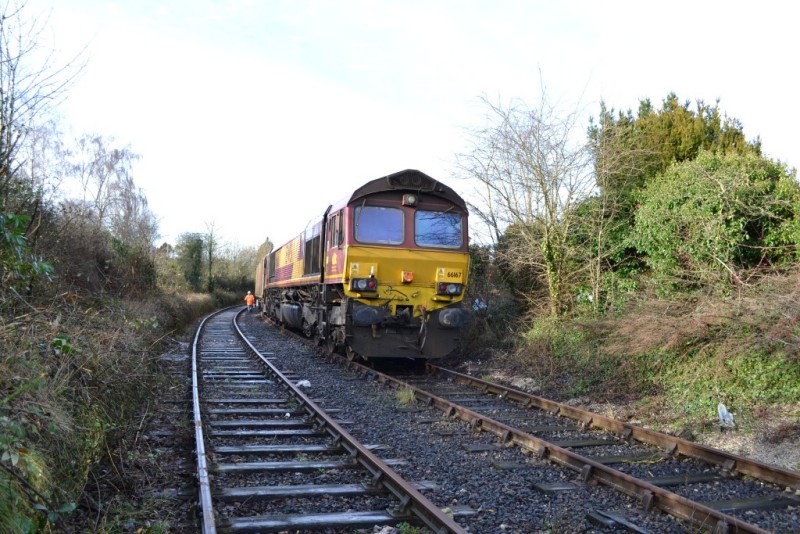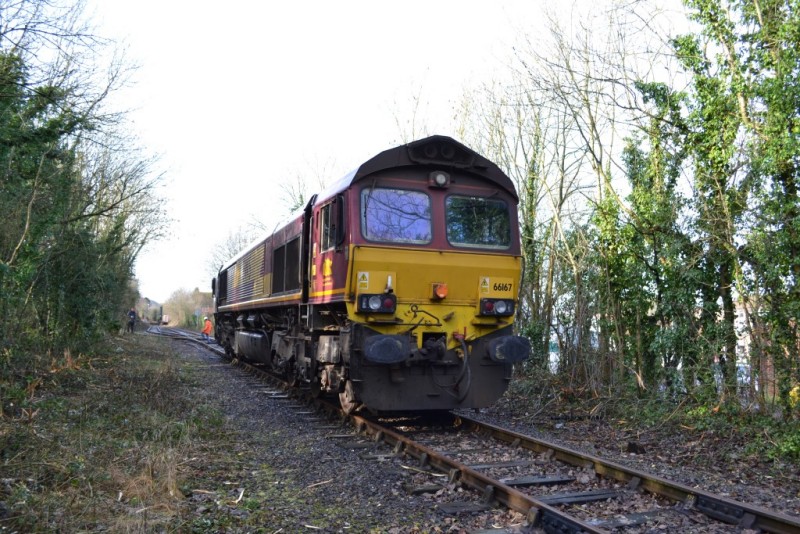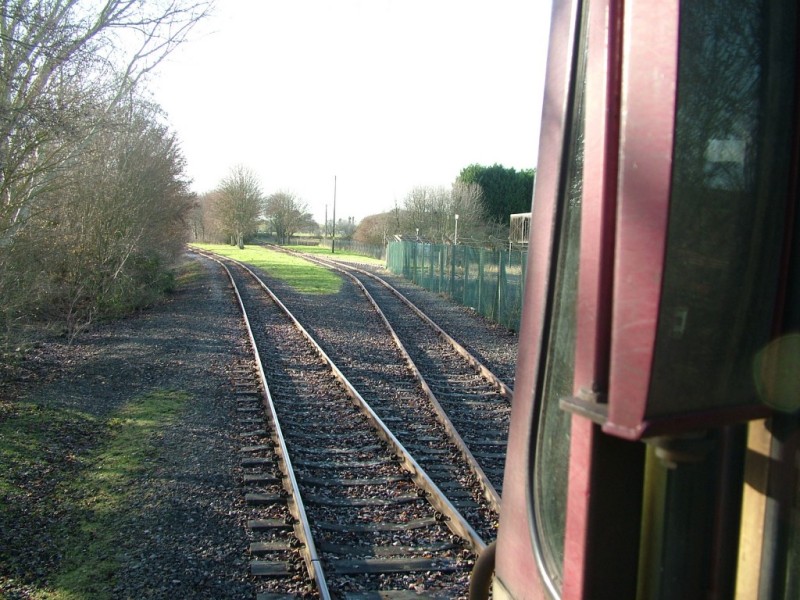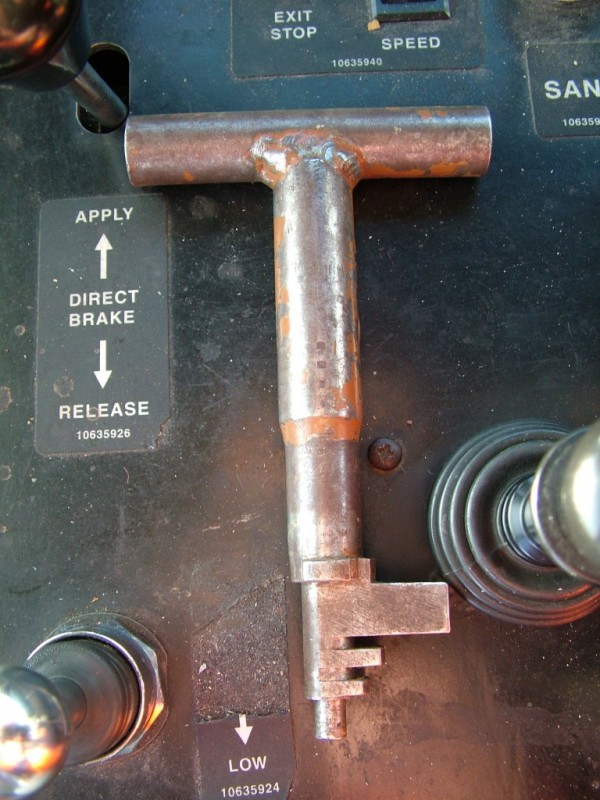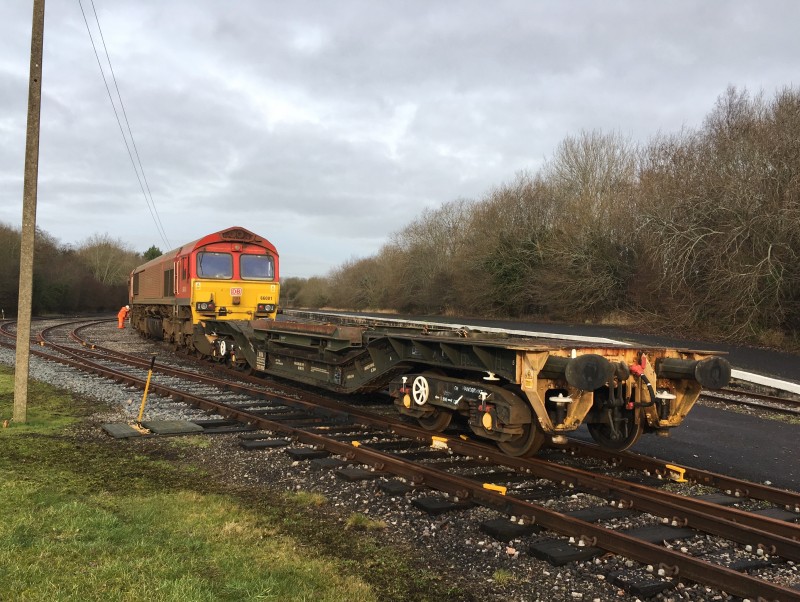
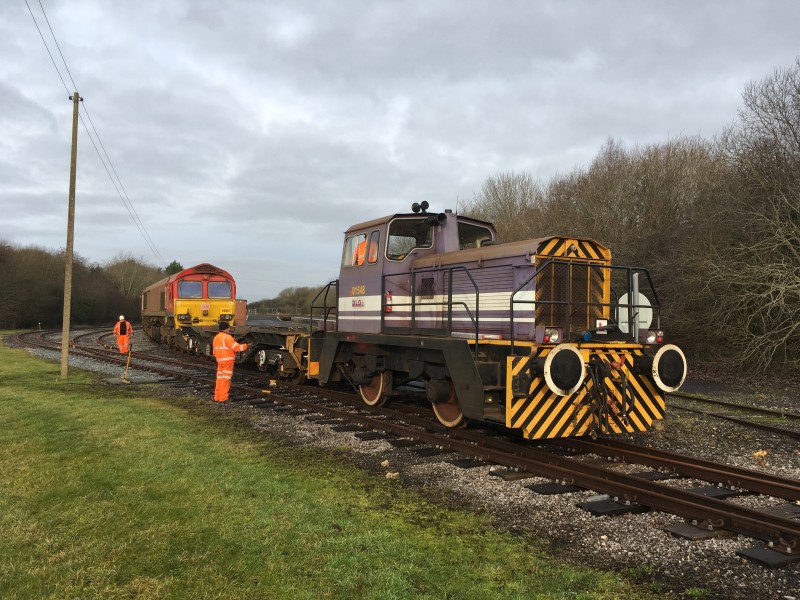
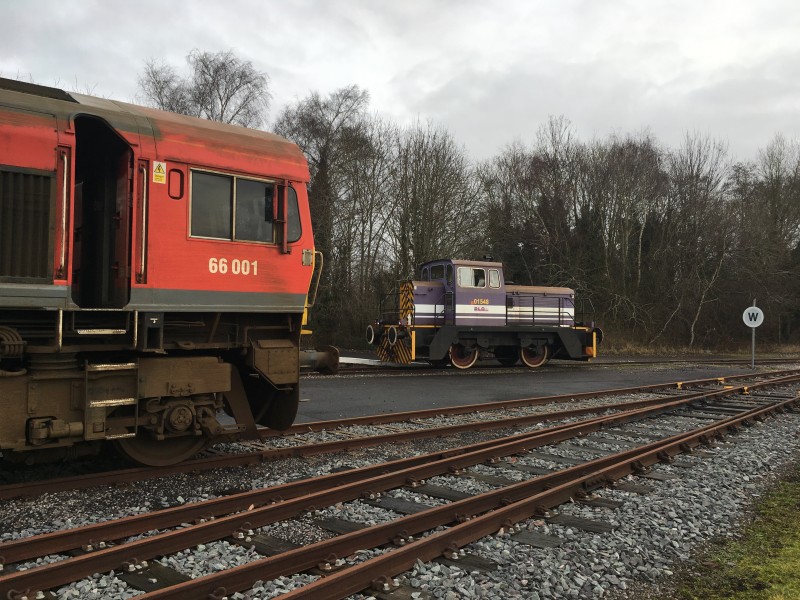
Dave writes:
The train was a light load from Eastleigh on the Tuesday 17th January 2017 running as 6Z19 with 66001. The route out was via Romsey, Laverstock South and
North Junctions, then propel off the main line at Andover through the branch crossover, draw the train into the platform loop and run round. It is then pulled
forward towards the branch clear of the ground frame point work. The video covers from this point at Andover, with the train clear of the main line.
The shunter, Pat, has closed the groundframe and brought up the Annett’s Key, and the train departs.
After a trundle down the branch and a chat about it for our colleague learning, we reach Ludgershall station loop where we first pause to check the loop points and discuss the recent consequences of an MPV trip down the branch not doing so, then draw through the station loop (clearing trees as we go). Pat drops off to resets the road (the trailing of hand points had just been forbidden nationally at that time), and with the gates open we proceed into the yard, meeting Shaun, the shunter and a former “main line” colleague from Didcot yard. We then buffer up to the solitary wagon forming our train to be taken back to Eastleigh. After the video finishes, the wagon was pushed in clear to allow the Ludgershall locomotive to drop out of the next road and come back on top of the train we’d brought. Whilst this was being removed, we changed ends, brake tested the single wagon, and with the paperwork complete, departed for Andover again.



Next comes a batch of photographs covering a trip from Eastleigh to Ludgershall.
Thursday 1st March 2012, 6Y20 Eastleigh East Yard to Ludgershall cable train, Eastleigh driver Dave Purvis, Eastleigh mobile Shunter Pete Catt.
The cable train (used in connection with resignalling work) was based at Ludgershall, with the cable drums being stored there and loaded ready for the train to go out and work (nights and weekends). The train was also stabled at Eastleigh or Woking as appropriate to the job in hand. On the day in question the train and its generator vans were being returned from Eastleigh East Yard to Ludgershall. The route out was via Romsey, and Laverstock South and North Junctions. This meant the train arrived from the West at Andover and stopped in the platform clear of the ground signal controlling access to the branch crossover. From here a shunter was required and it was critical that they were in position at the right time. Basingstoke Signalbox would usually want to know if the shunter was with the train, or would be going there in a van – always risky in the Summer with the holiday traffic. On this day Pete was there to obtained the release from Basingstoke signal box, which allowed him to take control of the ground frame and open it, in other words set the crossover points and clear the signal for me to propel the train off the main line at Andover and onto the branch.
As the train arrived from the West and the branch leaves Andover in a Westerly direction too, it needed to either be top and tailed with a loco at each end, which was wasteful, or the loco needed to be run round to the other end as on this day. The problem then facing us was that the train was longer than the run round loop available alongside the platform in Andover Yard. To deal with this, and with the loco still at the East end of the train, the branch crossover was reset and the train drawn forward and stopped so half of it was clear of the points to the branch siding (running next to the branch itself as it leaves Andover). Pete then split the train at this point and the first half was drawn into the platform loop. The ground frame was then used again to set the road for the branch siding, trapping the rest of the train on the branch itself. The loco was uncoupled and run into the loop head shunt then run back through the loop to be coupled to the other end of the first half.
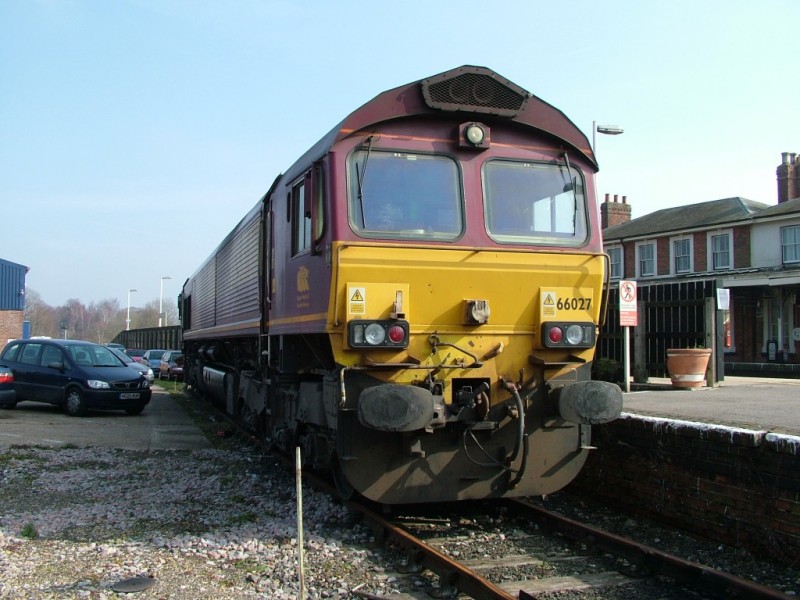
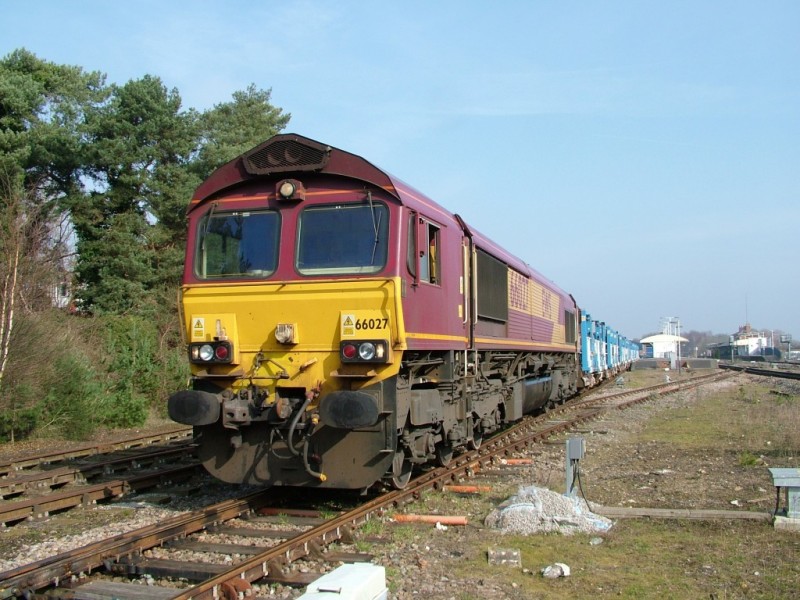
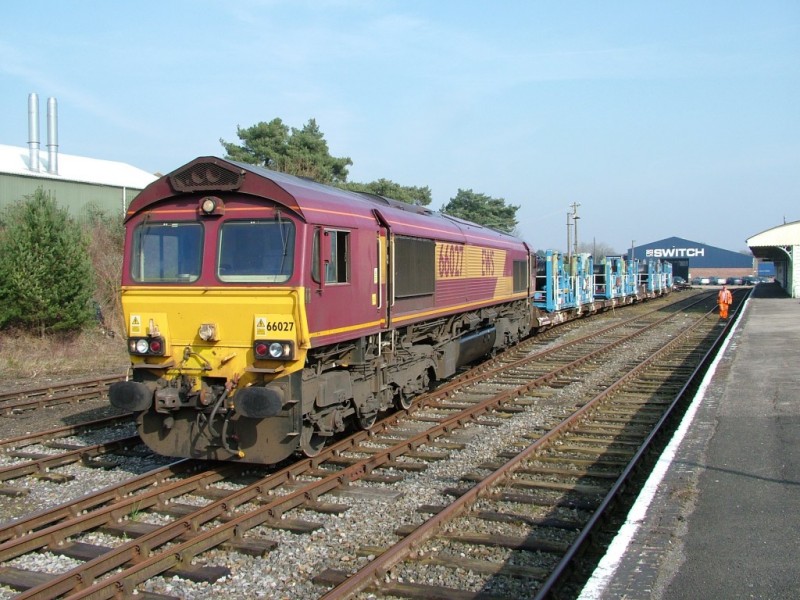
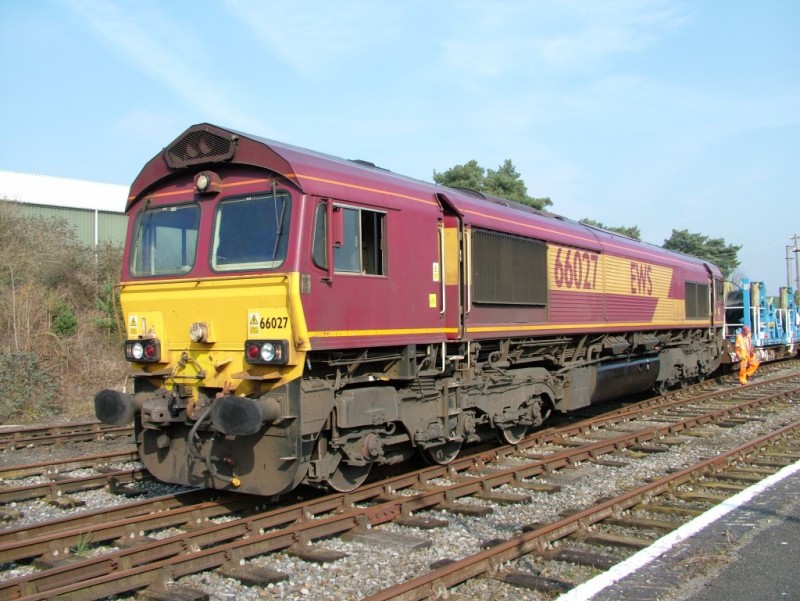
So, the second part of the train could now be drawn into the platform loop and the locomotive run round and attached to the other end as before. This time the second half was then drawn onto the branch, clear of the loop points, then propelled back onto the first half in the yard. All this shunting now meant the locomotive had ended up coupled to the West end of the second half of the train, and upon this being coupled to the first half, was now at the opposite end of the train compared to initial arrival at Andover. The train had also been reformed to be in the same formation as it had been upon arrival. The train then needed to be brake tested which was could be done where it stood, but would often be done by drawing it up the branch as far as the branch stop board, clearing the yard level crossing for Switch and give the shunter a chance to shut the ground frame too.
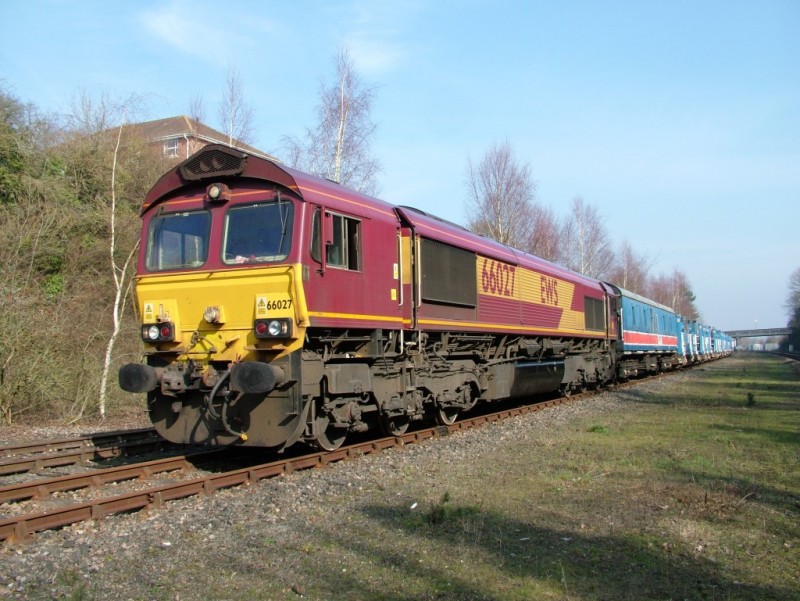
At Ludgershall, a stop board had protected the loop, but had been removed by someone at a time past, and the hand points here were renown for being tampered with as they sat close to a busy foot crossing. A check that they were set correctly without stones having been placed between the blades and the stock rails, and then the train could be taken on into the station loop. The foot crossing had very short approaches too, so a hand on the horn warned anyone who might arrive at the last minute and take a chance. This didn’t always deter the foolhardy who, often shielding themselves with a toddler in a push chair, might elect to cross anyway. Running through the crumbling platforms in the station loop and squealing around the tight curve where the station signal box once stood might attract some children or interested bystanders during the day, but it would always attract a volley of abuse at night from the houses built on the old station site. This was a common occurrence with property on former railway land because estate agents appeared to be economical with the truth as to the site’s history and the railway’s right to run trains at any hour on any day.
With the gates to Ludgershall open and permission to pass the stop board given the train was then drawn into Ludgershall yard. A chat with the shunter, and then it was on round to the former location of Perham Junction signal box to shunt the train into the sidings alongside the engine shed.
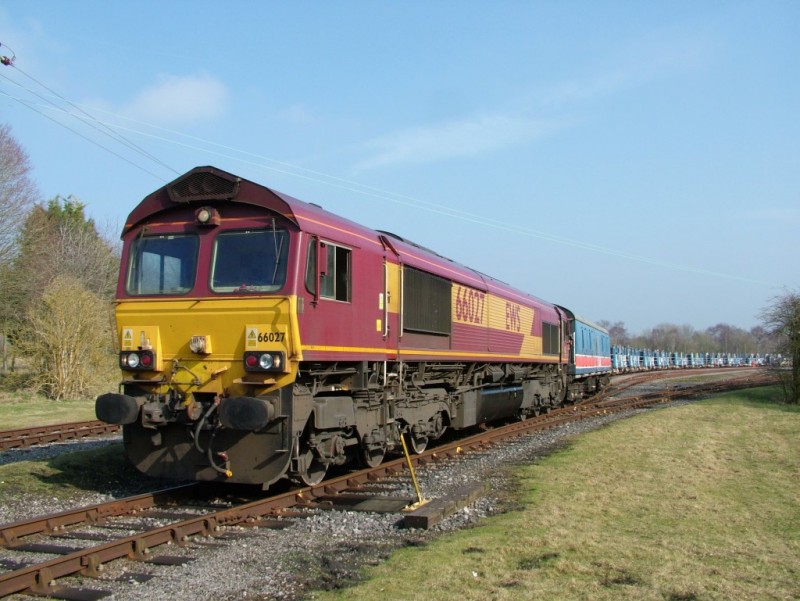
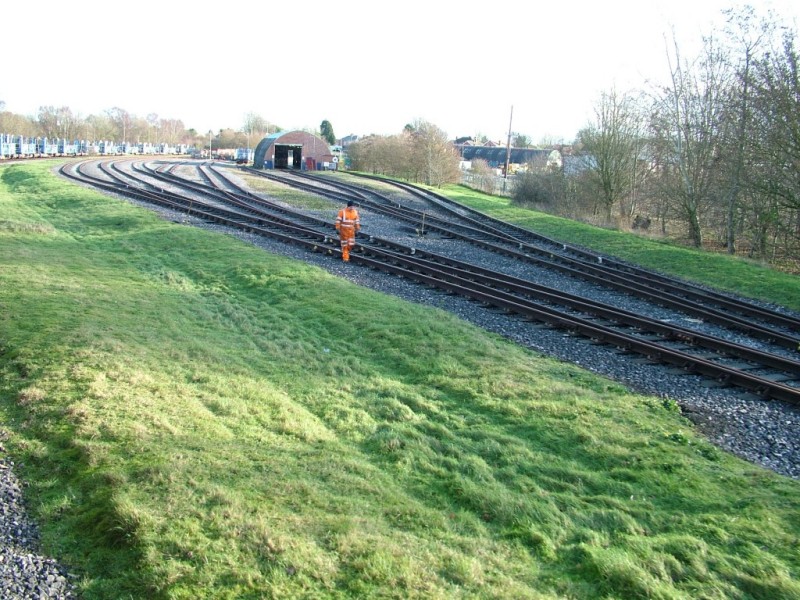
Light loco it was possible to have a little sport and creep up upon those who saw fit to use the branch as a footpath – usually well-equipped hikers - and give them a “little toot” on the horn. Points were then awarded for the distance leapt, length of roll down embankment, time taken to extricate themselves from the brambles and the degree of imagination used in the excuse for walking down the middle of a railway. A bonus was awarded for the last round if we were told, usually with great indignation and moral certainty that our locomotive “had no right to be there”. I kid you not.
At Andover the Annett’s key returned to the ground frame with Pete, who then rang the bobby at Basing Box. Once the release was given by that esteemed person (if he’d let you run early) or that stupid so and so (if you were held to time), the frame could be opened and the loco let back out onto the main. If heading to, say Didcot, it was then a case of obeying the main aspect at the far end of the platform, but on this day retracing the mornings run back to Eastleigh meant changing ends behind the branch signal. This returned to the control of the signal box once the ground frame was closed and the release handed back, and would be cleared for the crossover to the down main to head West. Another day out on the Midland and South Western Junction Railway came to an end.
The last photos show 66167 running round train in Ludgershall station in January 2014
